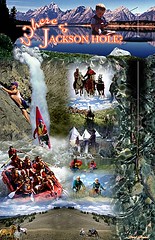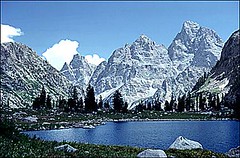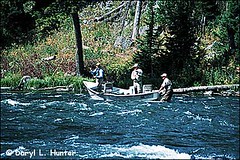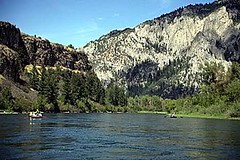Ethanol is a commercially proven renewable bio-fuel which is used as an additive to gasoline, either as an oxygenate additive as mandated by federal or state "clean air" programs, or as an octane enhancer or gasoline substitute. It is refreshing to know that fuel choice is on the horizon and it is in our grasp to write an obituary for foreign oil.
Ethanol is not a new fuel, in 1826; Samuel Morey developed an engine that ran on ethanol and turpentine. Ethanol is typically sold in gasoline blends of E-10 (10% ethanol) and E-20 (20% ethanol) for which no engine modifications are required. Ethanol is also being used more regularly in flexible fuel vehicles (FFV's). The FFV is designed to run on unleaded gasoline and ethanol in any mixture. The engine and fuel system in a flex-fuel vehicle must be adapted slightly to run on alcohol fuels because they are corrosive. They require a special sensor in the fuel line to analyze the fuel mixture and control the fuel injection and timing to adjust for different fuel compositions. , E-85 (85% ethanol) is a blend of 85% ethanol, 15% gasoline and is the preferred fuel for the FFV's.
Detroit is increasing production of FFV's to meet the demand for those aspiring to switch to this bio-fuel and several models already are on the market. FFV's are not a new idea Henry Ford produced the Model T as a flexible-fuel vehicle that could run on ethanol, gasoline or a combination of the two.
Minnesota Senator Mark Dayton introduced the Ethanol Vehicle Awareness amendment to the highway bill earlier this year, which requires all automakers to display labels inside the gas tank covers and on windshields of vehicles that have the ability to run on E-85 fuel, beginning with the model year 2007. ñThe amendment was unanimously approved by the full Senate May 12 and will help remind consumers that they have the option to buy E-85 fuel,î Dayton also co-sponsored an amendment to the Senate's highway bill to provide a tax credit of up to $30,000 for gas stations that install or convert pumps to offer E-85 fuel. ñEthanol gasoline is still not available in many regions of the country,î Dayton said. ñThis tax incentive would help to promote E-85 use nation-wide.î
Farmers and industry officials say efforts to promote E-85 fuel are paying off. Wimbledon North Dakota corn farmer Mike Clemens says, ña year ago nobody was even talking about E-85î.
E-85 is gaining popularity in eastern Wyoming and hopefully its availability will spread westward. The Torrington Terminal in Torrington and Quealy Dome Sinclair west of Laramie, both sell E-85. Ronnie Hill, who is involved in both stations, sees a bright future. He hopes to add several more E-85 outlets in the coming year. Given our dependence on foreign oil, "we need to wake up as a nation and have more flexible types of energy," Hill said. Hill buys his ethanol from Wyoming Ethanol who's distillery is in Torrington Wyoming. E-85 is selling for $1.57 per Gallon; straight unleaded regular costs $2.10. E-85 is cheaper but you can't go as far on a gallon.
On the outskirts of Torrington Wyoming, Wyoming Ethanol last year produced 5.3 million gallons of the fuel. A $14-million expansion that's now underway will double production capacity, said Dan Schwartzkopf, senior vice president of Wyoming Ethanol's parent company Renova Energy. Renova is also acquiring a plant in Hayburn, Idaho.
Schwartzkopf said Renova Energy has a five-year plan to increase its ethanol production to 50 million gallons annually. Renova expects to build at least two more plants in the 15-million- to 20-million-gallon production range.
Given the outlook for oil production, or lack thereof in the years ahead, Schwartzkopf thinks ethanol has turned a corner in terms of public acceptance. Recently President Bush turned up in a biodiesel plant, praising the merits of alternative fuels. "Whoever thought you'd hear that oil guy talking like that," Schwartzkopf said.
The U.S ethanol industry produced 3.4 billion gallons in 2004. By contrast, according to the U.S. Energy Information Administration, Americans burn about 136 billion gallons of gasoline every year. We have a long way to go; however whichever fuel we produce here we don't have to buy from some country we shouldn't be doing business with.
The wholesale price of ethanol generally varies with the wholesale price of gasoline and, therefore, the price of crude oil. When we unleash power of America's agrarian juggernaut to meet our energy needs, hopefully the efficiency of America's farmers will create it's own dynamic of supply and demand where a competitive market place can bring the price of energy to heel.
Between Jackson Hole's flag waving patriotic rednecks that no longer want to support Arab oil producers to our neurotic, over the top tree huggers, there ought to be enough of us to support the success for a fuel outlet to start stocking some E-20 and E-85 so they can cash in on one of those $30,000 tax credits for converting pumps to offer E-85 fuel. I bet an eco-minded community like ours will make it worth it for a forward thinking entrepreneur.
 Montana, Gov. Brian Schweitzer's office is planning on changing how bison that wander out of Yellowstone are managed. Currently bison are rounded up and sent to slaughter but some are sent to a quarantined research facility in Corwin Springs MT.
Montana, Gov. Brian Schweitzer's office is planning on changing how bison that wander out of Yellowstone are managed. Currently bison are rounded up and sent to slaughter but some are sent to a quarantined research facility in Corwin Springs MT. 







 Turquoise Lake is an alpine gem in the middle of the Gros Ventre Wilderness and there are many ways to get there but the most expeditious one is via the Goodwin Lake Trail. This access facilitates a 2,000-foot elevation head start over most others by virtue of its 8,000-foot trailhead.......................... About 2.5 miles from the trailhead you come to Goodwin Lake which is at the base of a steep flank of Jackson Peak............................... Climbing out of the cirque that hosts Goodwin Lake you enter sub alpine terrain with fewer trees and a lot more meadows revealing awesome views in every direction.....................
Turquoise Lake is an alpine gem in the middle of the Gros Ventre Wilderness and there are many ways to get there but the most expeditious one is via the Goodwin Lake Trail. This access facilitates a 2,000-foot elevation head start over most others by virtue of its 8,000-foot trailhead.......................... About 2.5 miles from the trailhead you come to Goodwin Lake which is at the base of a steep flank of Jackson Peak............................... Climbing out of the cirque that hosts Goodwin Lake you enter sub alpine terrain with fewer trees and a lot more meadows revealing awesome views in every direction.....................


 The cowboy is one of America's most cherished and mythical figures. He symbolizes the mystique of the American west, a caricature of frontier courage, independence, and rugged masculinity. The iconical cowboy brings to mind, horses, cattle, the howl of a coyote, and wide-open spaces, the cowboy riding off into the sunset. In the west all these things are still alive and well but sadly the cowboy may be riding off into the sunset for good.
The cowboy is one of America's most cherished and mythical figures. He symbolizes the mystique of the American west, a caricature of frontier courage, independence, and rugged masculinity. The iconical cowboy brings to mind, horses, cattle, the howl of a coyote, and wide-open spaces, the cowboy riding off into the sunset. In the west all these things are still alive and well but sadly the cowboy may be riding off into the sunset for good.
